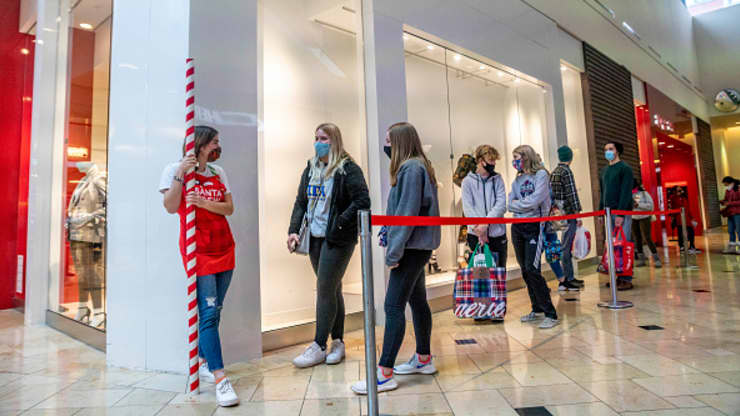Lauren Thomas@LAURENTHOMAS
Source: www.cnbc.com, November 2020
- Consumers spent $9 billion on the web the day after Thanksgiving, up 21.6% year over year, according to data from Adobe Analytics.
- The pandemic pushed more shoppers to stay home and shop online from their sofas, avoiding crowded stores and waiting in lines at malls.
- Cyber Monday 2020 is expected to become the biggest digital sales day in history in the United States.
Spending online on Black Friday this year surged nearly 22% to hit a new record, according to data from Adobe Analytics, as the Covid pandemic pushed more people to shop from the sofa and avoid crowded stores and malls.
Consumers spent $9 billion on the web the day after Thanksgiving, up 21.6% year over year, according to Adobe, which analyzes website transactions from 80 of the top 100 U.S. online retailers.
“New consoles, phones, smart devices and TVs that are traditional Black Friday purchases are sharing online shopping cart space this year with unorthodox Black Friday purchases such as groceries, clothes and alcohol, that would previously have been purchased in-store,” said Taylor Schreiner, a director at Adobe Digital Insights.
As many retailers kicked off their holiday sales in October this year, tied to the delayed timing of Amazon’s Prime Day event, and put more doorbuster deals online, shoppers had less of a reason to head to stores on Black Friday. People who did venture out were greeted with fewer lines and emptier parking lots than holiday sales events of the past.
On Black Friday, Adobe found consumers spent $6.3 million per minute online, or $27.50 per person, on average. Spending on smartphones surged 25.3% year over year to reach $3.6 billion, representing 40% of total e-commerce spending.
And with retailers from Target to Best Buy to Dick’s Sporting Goods encouraging customers to buy online and then safely pick up their orders at stores, the use of curbside pickup on Black Friday increased 52% from a year earlier, Adobe found.
People also are turning to the internet for fresh food and snacks this holiday season. Online grocery shopping on Black Friday surged 397% compared with October daily averages, Adobe said. Sales of personal care products skyrocketed 556%, and online spending on pet products rose 254%.

